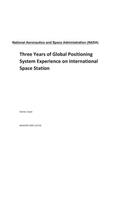
Three Years of Global Positioning System Experience on International Space Station
Series:
The International Space Station global positioning systems (GPS) receiver was activated in April 2002. Since that time, numerous software anomalies surfaced that had to be worked around. Some of the software problems required waivers, such as the time function, while others required extensive operator intervention, such as numerous power cycles. Eventually, enough anomalies surfaced that the three
NaN
VOLUME
English
Paperback

The International Space Station global positioning systems (GPS) receiver was activated in April 2002. Since that time, numerous software anomalies surfaced that had to be worked around. Some of the software problems required waivers, such as the time function, while others required extensive operator intervention, such as numerous power cycles. Eventually, enough anomalies surfaced that the three pieces of code included in the GPS unit have been re-written and the GPS units were upgraded. The technical aspects of the problems are discussed, as well as the underlying causes that led to the delivery of a product that has had numerous problems. The technical aspects of the problems included physical phenomena that were not well understood, such as the affect that the ionosphere would have on the GPS measurements. The underlying causes were traced to inappropriate use of legacy software, changing requirements, inadequate software processes, unrealistic schedules, incorrect contract type, and unclear ownership responsibilities. Gomez, Susan Johnson Space Center NASA/TM-2005-213715...
Price Comparison [India]
In This Series
Bestseller Manga
Trending NEWS




















